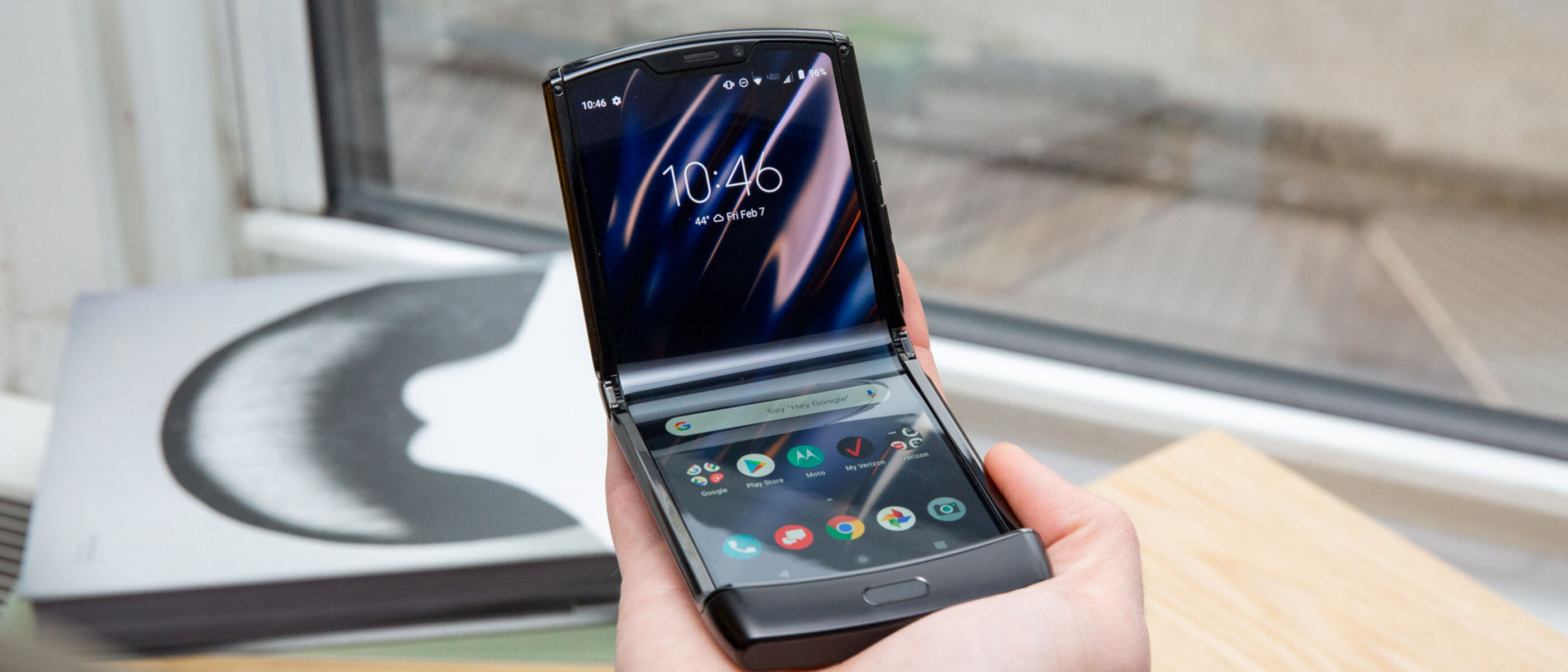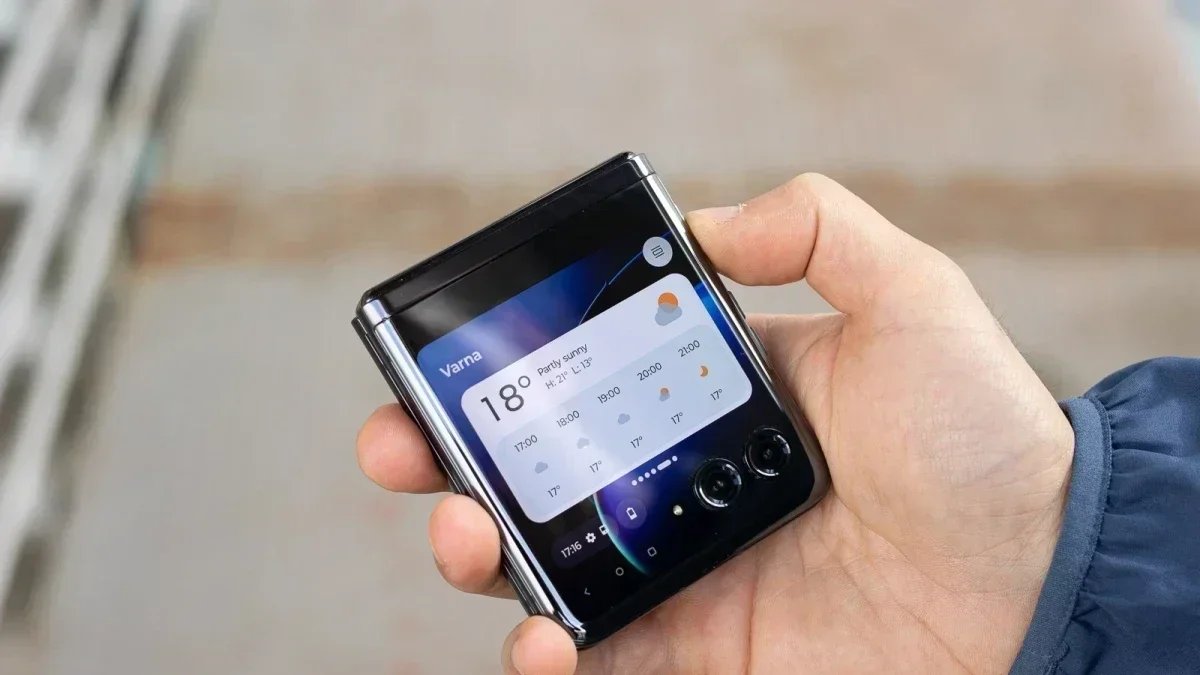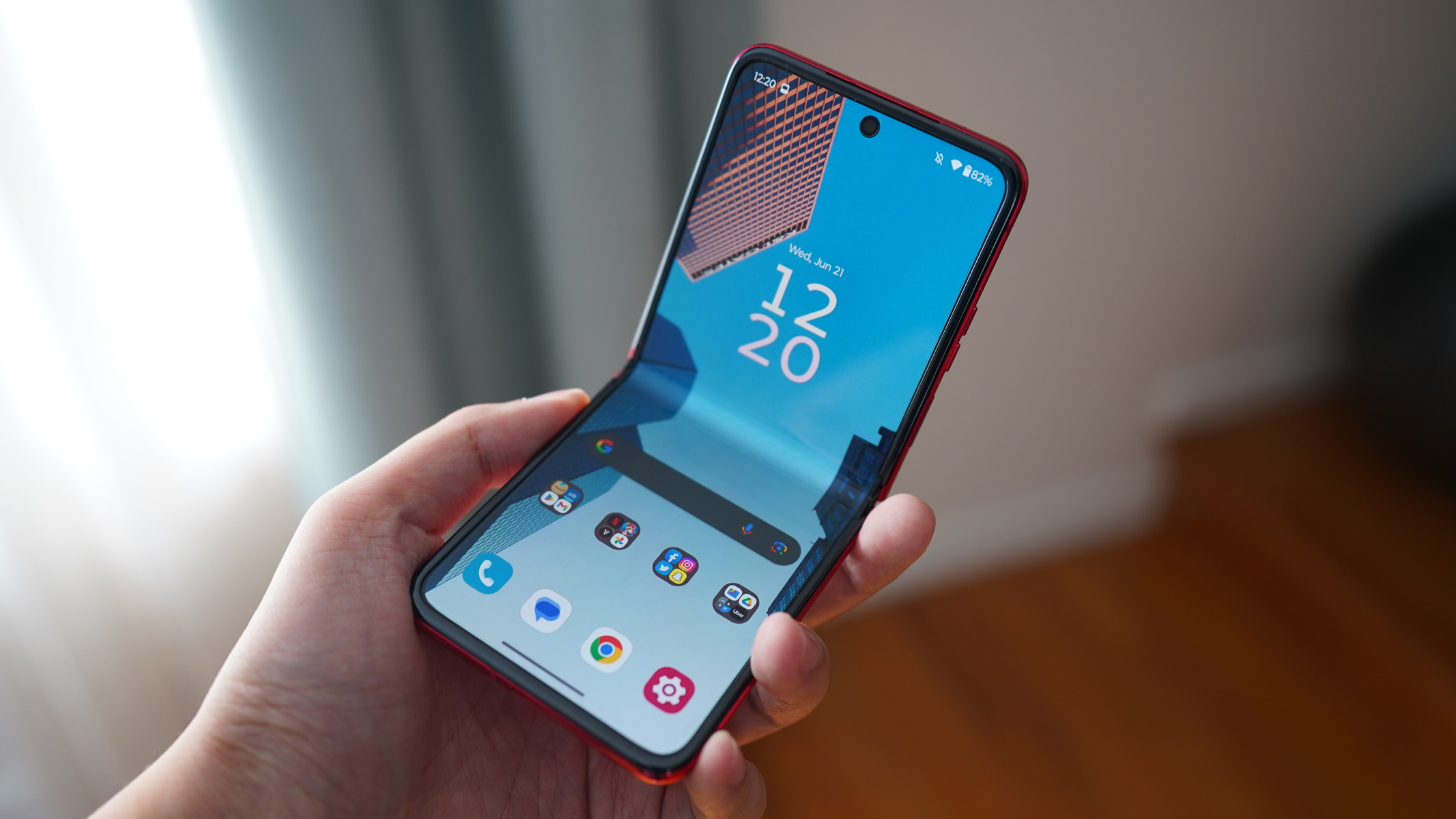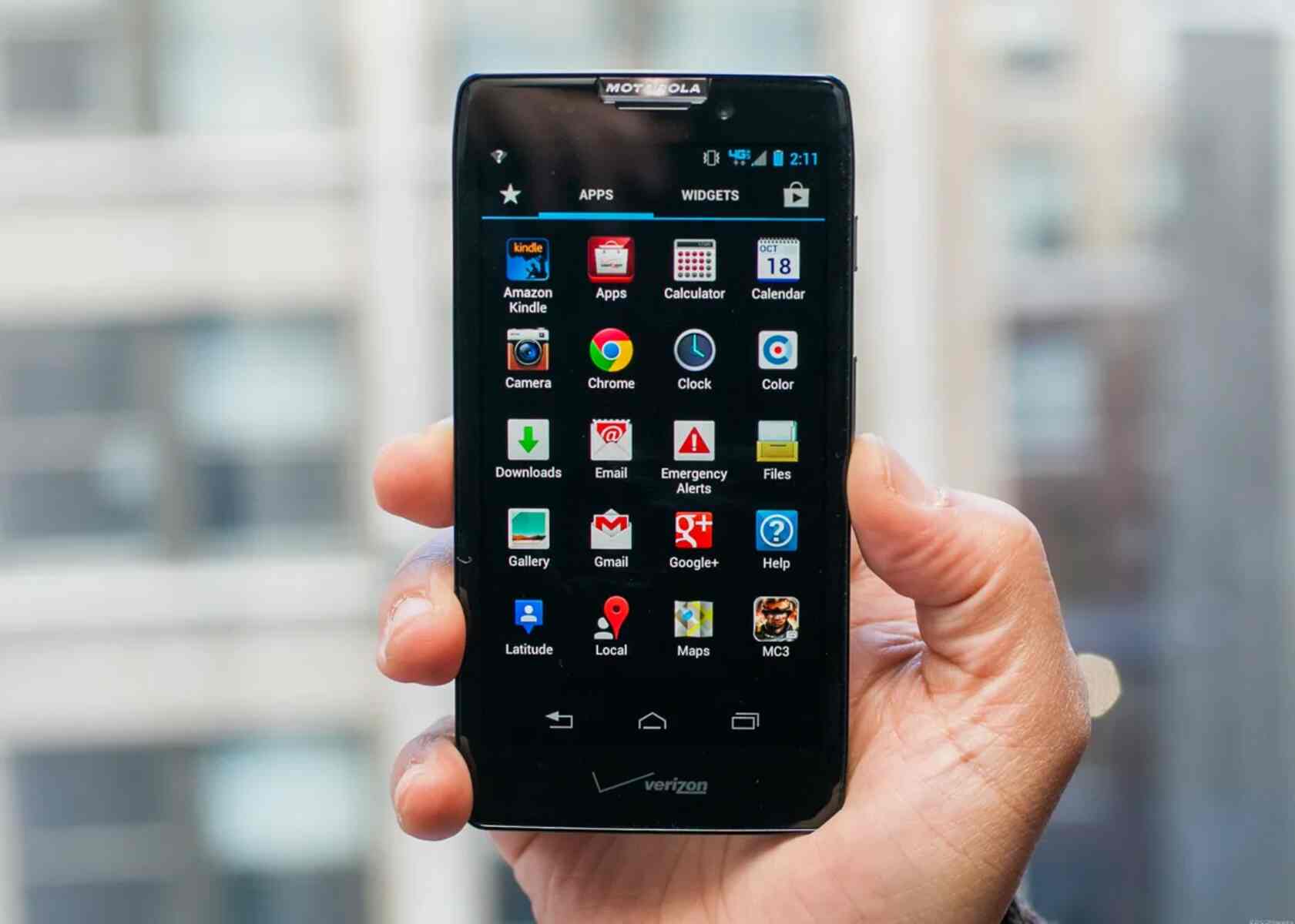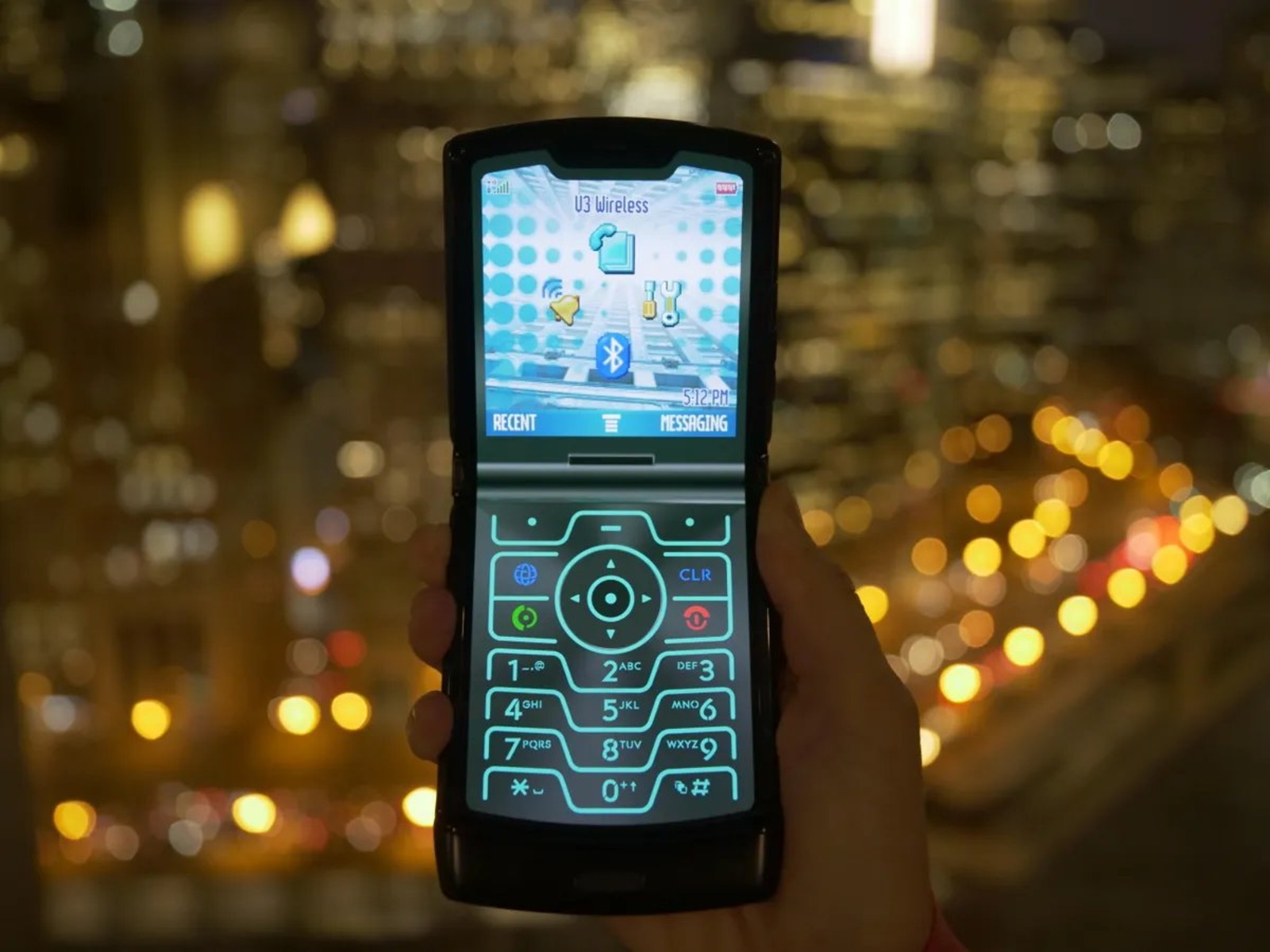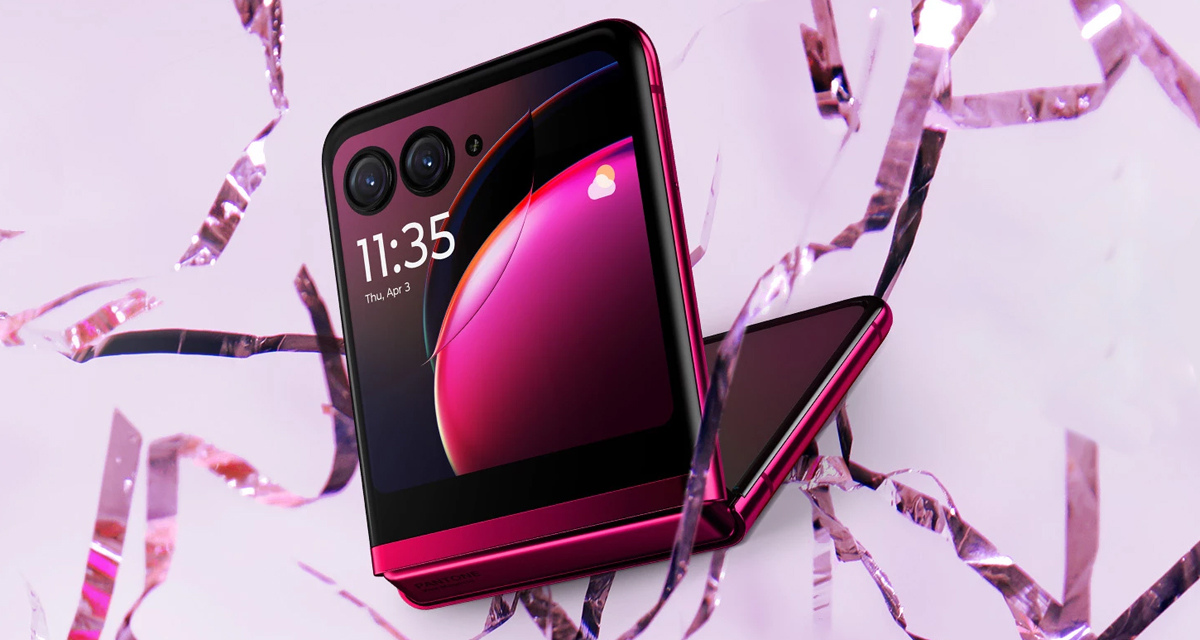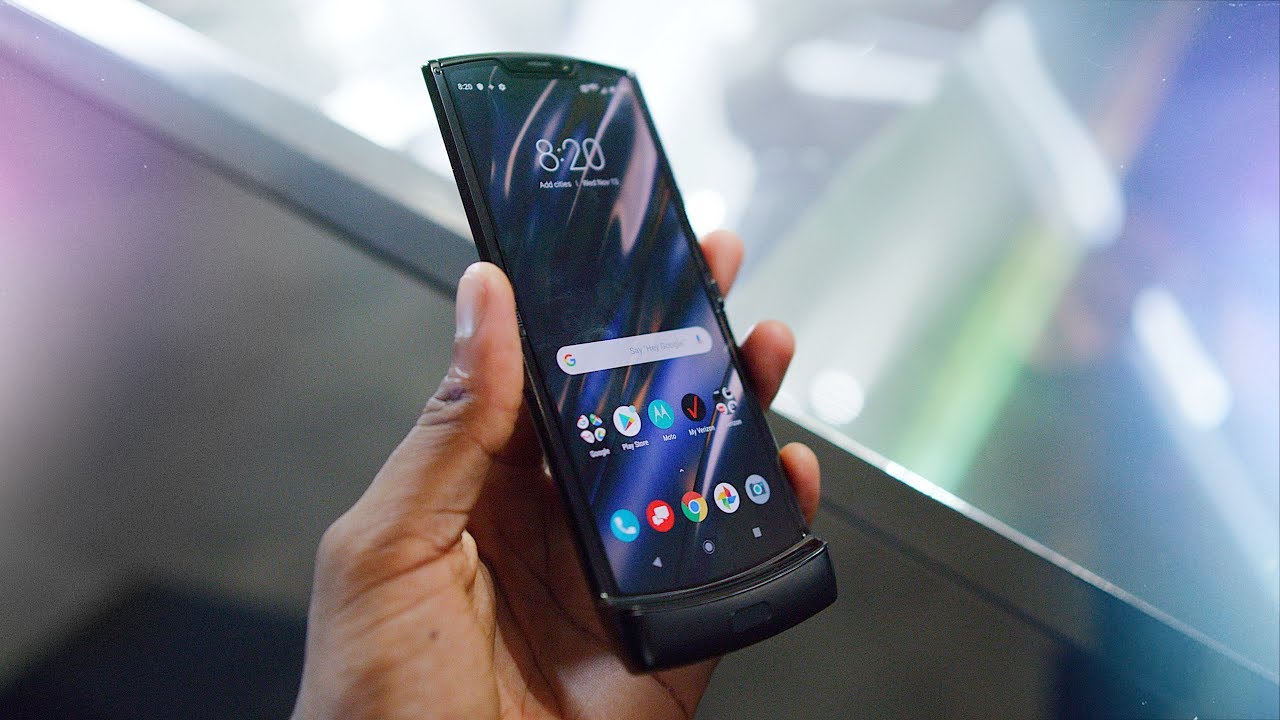Introduction
The Motorola Razr holds a special place in the history of mobile devices, captivating the world with its sleek design and innovative features. As we delve into the valuation of this iconic device, it's essential to understand its impact on the mobile industry and the enduring legacy it has left behind.
The Motorola Razr, first introduced in 2004, revolutionized the concept of a flip phone, setting new standards for style and functionality. Its ultra-thin profile and metallic finish made it a fashion statement, earning it a dedicated following among trendsetters and tech enthusiasts alike. The Razr's influence extended beyond its physical attributes, as it represented a shift towards more personalized and portable communication devices.
Over the years, the Razr evolved to incorporate advanced features, such as a high-resolution display, integrated camera, and expandable memory, further solidifying its status as a coveted gadget. Its enduring popularity prompted Motorola to release updated versions, each iteration refining the original concept while embracing contemporary technological advancements.
As we embark on the journey to determine the worth of the Motorola Razr, it's crucial to recognize the profound impact it had on shaping consumer expectations and industry trends. By examining its evolution, features, market reception, and comparative products, we can gain valuable insights into its intrinsic value and the enduring resonance it holds in the realm of mobile devices.
History of Motorola Razr
The history of the Motorola Razr is a captivating journey that mirrors the evolution of mobile technology. Launched in 2004, the original Razr V3 swiftly became an iconic symbol of style and innovation. Its ultra-thin profile, sleek metallic design, and the revolutionary clamshell form factor set it apart in a market dominated by bulky, utilitarian handsets. The Razr V3's aesthetic appeal transcended the realm of technology, making it a coveted fashion accessory and a status symbol.
The success of the Razr V3 marked a turning point for Motorola, propelling the company to the forefront of the mobile industry. Its unprecedented popularity and widespread acclaim solidified its position as a cultural phenomenon, with celebrities and trendsetters proudly flaunting the device in public appearances and media features. The Razr V3's influence extended beyond its functionality, embodying a lifestyle choice and a statement of individuality.
Building on the triumph of the original Razr, Motorola continued to innovate, introducing subsequent iterations that combined cutting-edge technology with the timeless allure of the Razr brand. The Razr 2, released in 2007, showcased enhanced features, including a larger external display and improved camera capabilities, further cementing its status as a sought-after device.
The Razr's impact on the mobile landscape was not solely confined to its physical attributes; it represented a paradigm shift in consumer expectations. Its seamless integration of style and substance redefined the concept of a mobile device, setting new standards for elegance and functionality. The Motorola Razr's legacy endures as a testament to the enduring appeal of innovative design and its ability to transcend the boundaries of conventional technology.
As we reflect on the history of the Motorola Razr, it becomes evident that its influence extends far beyond its initial release. The Razr's journey from a groundbreaking flip phone to a cultural icon serves as a testament to its enduring impact on the mobile industry and its timeless relevance in the annals of technological innovation.
Features and Specifications
The Motorola Razr, with its groundbreaking design and innovative features, set a new benchmark for mobile devices. The original Razr V3 boasted a remarkably slim profile, measuring a mere 13.9mm in thickness, making it one of the thinnest phones of its time. Its sleek metallic finish and iconic clamshell form factor captured the imagination of consumers, elevating it to the status of a fashion statement.
In addition to its striking exterior, the Razr V3 featured a vibrant 2.2-inch color display, delivering crisp visuals and enhancing the user experience. The external display, a novel inclusion at the time, allowed users to view incoming calls and messages without opening the phone, adding a layer of convenience to its functionality.
The Razr V3 also integrated a 640×480 pixel camera, enabling users to capture moments on the go. This feature, coupled with the phone's multimedia messaging capabilities, transformed the Razr into a versatile communication tool, bridging the gap between style and functionality.
Furthermore, the Razr V3 offered Bluetooth connectivity, empowering users to seamlessly transfer files and connect with other devices. Its expandable memory, a feature ahead of its time, allowed users to store additional data, music, and photos, catering to the growing demand for multimedia capabilities in mobile devices.
As the Razr evolved, subsequent iterations introduced advanced features, such as 3G connectivity, improved camera technology, and expanded storage capacity, aligning with the evolving needs of consumers. The Razr series continued to prioritize design and user experience, incorporating features that complemented its iconic form factor while embracing technological advancements.
The enduring appeal of the Motorola Razr lies in its ability to seamlessly blend style with functionality, offering a compelling user experience that transcends conventional expectations. Its features and specifications, from the slim profile to the integrated camera and expandable memory, reflect a harmonious fusion of design and innovation, solidifying its status as a timeless icon in the realm of mobile devices.
Market Analysis
The Motorola Razr, upon its debut, swiftly captured the attention of consumers and industry experts alike, carving a distinct niche in the competitive mobile market. Its revolutionary design and advanced features positioned it as a trendsetting device, appealing to a broad spectrum of users. The Razr's initial reception reflected a convergence of technological innovation and consumer demand for stylish, functional devices.
The market analysis of the Motorola Razr reveals a compelling narrative of consumer preferences and industry dynamics. Its launch in 2004 coincided with a burgeoning interest in mobile devices that transcended mere utility, as users increasingly sought devices that complemented their personal style and technological needs. The Razr's sleek profile and metallic finish resonated with fashion-conscious consumers, positioning it as a coveted accessory and a statement of individuality.
Furthermore, the Razr's impact extended beyond its aesthetic appeal, as it introduced advanced features that aligned with evolving consumer expectations. The integration of a high-resolution display, camera capabilities, and expandable memory addressed the growing demand for multimedia functionality in mobile devices, positioning the Razr as a versatile communication and entertainment tool.
The market landscape at the time of the Razr's release was characterized by a shift towards personalized and portable communication devices. The Razr's success mirrored this trend, as it seamlessly blended style with functionality, appealing to a diverse audience spanning fashion enthusiasts, tech aficionados, and everyday users seeking a reliable and stylish mobile companion.
As subsequent iterations of the Razr were introduced, the market analysis reflected a sustained interest in the brand, with each release garnering attention and acclaim. The Razr's enduring appeal and ability to adapt to evolving consumer preferences underscored its resilience in a dynamic and competitive market.
The market analysis of the Motorola Razr illuminates its profound impact on the mobile industry, underscoring its ability to resonate with consumers and shape industry trends. Its legacy as a pioneering device that transcended traditional market categories solidifies its position as a timeless icon in the realm of mobile devices.
Comparable Products
When exploring the realm of comparable products to the iconic Motorola Razr, it's essential to consider devices that have made a lasting impact on the mobile industry and have redefined consumer expectations. The Razr's influence extended beyond its immediate competitors, as it represented a convergence of style, innovation, and functionality that set new benchmarks for mobile devices.
One notable comparable product is the Nokia 3310, a legendary device renowned for its durability and reliability. Launched in the early 2000s, the Nokia 3310 achieved cult status, becoming synonymous with robustness and long-lasting battery life. While the Nokia 3310 differed significantly in design from the Razr, its enduring popularity and iconic status positioned it as a formidable contender in the mobile market.
Another comparable product that left an indelible mark on the industry is the BlackBerry Curve series. Recognized for its iconic physical keyboard and secure messaging capabilities, the BlackBerry Curve appealed to professionals and business users seeking efficient communication tools. The Curve's emphasis on productivity and secure messaging set it apart from the Razr, catering to a distinct segment of users while embodying a commitment to functionality and reliability.
In the realm of design and innovation, the iPhone 3G stands out as a comparable product that reshaped the mobile landscape. Apple's foray into the smartphone market with the iPhone 3G introduced a revolutionary touch interface and an expansive App Store, redefining user interaction and app accessibility. While the iPhone 3G differed significantly from the Razr in terms of design and form factor, its impact on the industry and consumer behavior positioned it as a noteworthy counterpart to the Razr's legacy.
Furthermore, the Sony Ericsson Walkman series, celebrated for its music-centric features and stylish design, presents another compelling comparable product. The Walkman series integrated advanced music playback capabilities with sleek aesthetics, appealing to music enthusiasts and individuals seeking a dedicated music experience on their mobile devices. While distinct from the Razr in its focus on music and entertainment, the Walkman series exemplified a harmonious fusion of style and functionality, echoing the ethos that defined the Razr's appeal.
In examining these comparable products, it becomes evident that the Motorola Razr's impact transcended direct competition, as it represented a paradigm shift in consumer expectations and industry trends. Each of these devices, while distinct in their features and target audiences, contributed to the rich tapestry of mobile innovation, reflecting the diverse needs and preferences of users in an ever-evolving technological landscape.
Valuation Methods
Valuing an iconic device like the Motorola Razr requires a comprehensive approach that considers its historical significance, technological innovations, and enduring appeal. Several valuation methods can be employed to assess the worth of the Razr, each offering unique insights into its intrinsic and perceived value.
Historical Significance
The historical significance of the Motorola Razr plays a pivotal role in determining its valuation. Its status as a cultural icon and a trailblazer in mobile design and functionality contributes to its intangible value. The Razr's influence on consumer preferences and industry trends underscores its enduring legacy, elevating its worth beyond mere specifications and features.
Comparative Analysis
Conducting a comparative analysis with contemporary and subsequent devices allows for a contextual assessment of the Razr's value. By juxtaposing its features, design elements, and market impact with those of comparable products, a nuanced understanding of its unique selling points and enduring appeal can be gleaned. This method provides valuable insights into the Razr's position in the evolving landscape of mobile devices.
Market Reception
Evaluating the market reception of the Motorola Razr, both during its initial release and subsequent iterations, offers a tangible gauge of its value. Consumer demand, industry accolades, and sustained interest in the Razr serve as indicators of its enduring appeal and market relevance. Analyzing sales figures, consumer reviews, and industry recognition provides a quantitative and qualitative basis for assessing its worth.
Technological Impact
Assessing the technological impact of the Razr on subsequent mobile devices and design trends sheds light on its lasting value. The Razr's innovations, such as its ultra-thin profile, integrated camera, and multimedia capabilities, influenced the trajectory of mobile design and user expectations. Understanding its technological legacy and the ripple effects of its features on subsequent devices contributes to a holistic valuation of the Razr.
Cultural Resonance
The cultural resonance of the Motorola Razr, evidenced by its portrayal in popular media, its adoption by trendsetters, and its enduring presence in collective memory, adds an intangible dimension to its valuation. Its representation as a fashion accessory and a symbol of technological sophistication underscores its cultural significance, enriching its overall worth.
In synthesizing these valuation methods, a comprehensive understanding of the Motorola Razr's worth emerges, encompassing its historical, technological, and cultural impact. The convergence of these methods provides a nuanced and multifaceted perspective on the enduring value of the Razr, reaffirming its status as a timeless icon in the realm of mobile devices.
Conclusion
The valuation journey of the Motorola Razr unveils a compelling narrative of innovation, cultural resonance, and enduring impact. As we reflect on the historical significance, technological innovations, and market reception of the Razr, its intrinsic worth transcends conventional metrics, embodying a legacy that resonates with consumers and industry enthusiasts alike.
The Motorola Razr, with its groundbreaking design and advanced features, redefined the paradigm of mobile devices, setting new standards for elegance and functionality. Its iconic clamshell form factor, ultra-thin profile, and metallic finish positioned it as a fashion statement, captivating users with its blend of style and substance. The Razr's integration of a high-resolution display, camera capabilities, and expandable memory addressed the evolving needs of consumers, reflecting a harmonious fusion of design and innovation.
The market analysis of the Razr illuminates its profound impact on the mobile industry, underscoring its ability to resonate with diverse consumer segments. Its reception as a coveted fashion accessory and a versatile communication tool reflects a convergence of consumer preferences and industry trends, solidifying its position as a cultural icon.
In assessing the worth of the Razr, a comprehensive approach encompassing historical significance, comparative analysis, market reception, technological impact, and cultural resonance provides a multifaceted understanding of its enduring value. The Razr's historical significance as a trailblazer in mobile design, its sustained market relevance, and its cultural resonance as a symbol of technological sophistication converge to affirm its timeless worth.
The Motorola Razr's valuation transcends mere specifications and features, encapsulating a narrative of innovation and cultural impact that continues to reverberate in the realm of mobile devices. Its enduring legacy serves as a testament to the enduring appeal of innovative design and its ability to transcend the boundaries of conventional technology, reaffirming its status as a timeless icon in the annals of technological innovation.







